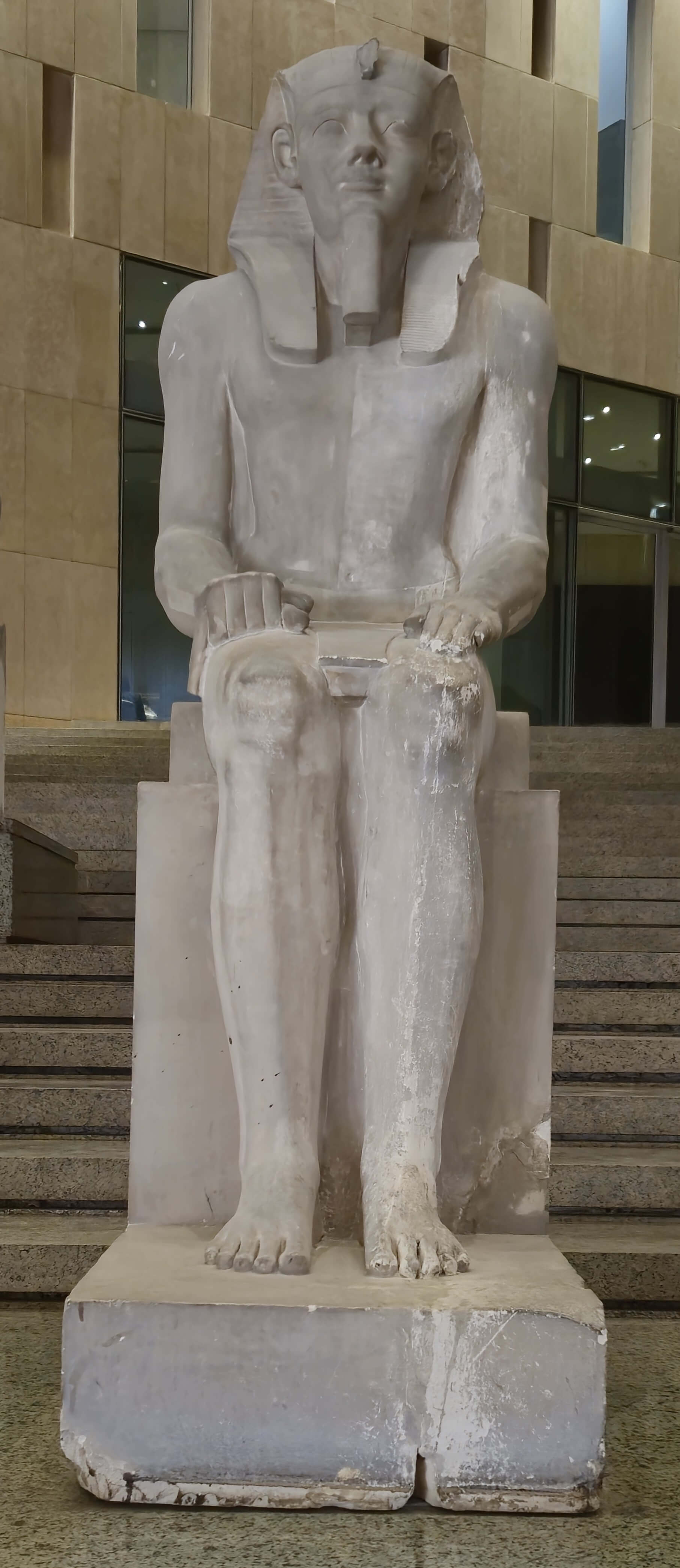
GEM 1693
King Senwosret I
Standing with dignity and royal poise, King Senwosret I—one of the most renowned rulers of Egypt’s Middle Kingdom (12th Dynasty, circa 1965–1911 BCE)—is portrayed in this limestone statue fragment discovered at Lisht, the site of his pyramid complex. He is shown wearing the Khat headdress, a royal head covering often used in ceremonial sculpture. It is fastened across his forehead with a central band that holds the uraeus, the sacred cobra symbol of kingship, fixed just above his brow.
The statue also reveals that the king dons a short kilt with tight pleats, a hallmark of Egyptian royal dress, complete with a broad, decorated belt—a feature frequently used to emphasize the waist and power of the torso in sculpture. In his right hand, Senwosret is depicted grasping a folded piece of cloth, which may seem minor but is a profound symbol of control and ritual presence. This small yet powerful gesture echoes a motif repeated across many royal statues from the Old through the New Kingdom: the calm, composed figure holding the cloth as a mark of eternal composure and readiness to fulfill divine duties.
Senwosret I, also known by his throne name Kheperka ... Découvrez plus avec Premium !
Débloquez toute l'histoire de cet artéfactPassez à Premium pour accéder à la description complète, aux guides audio et au contenu exclusif de tous les artéfacts.Accédez à l'audio complet et à la description des principales œuvres du GEM pour seulement 1,99 $
Vous cherchez un autre artéfact ?